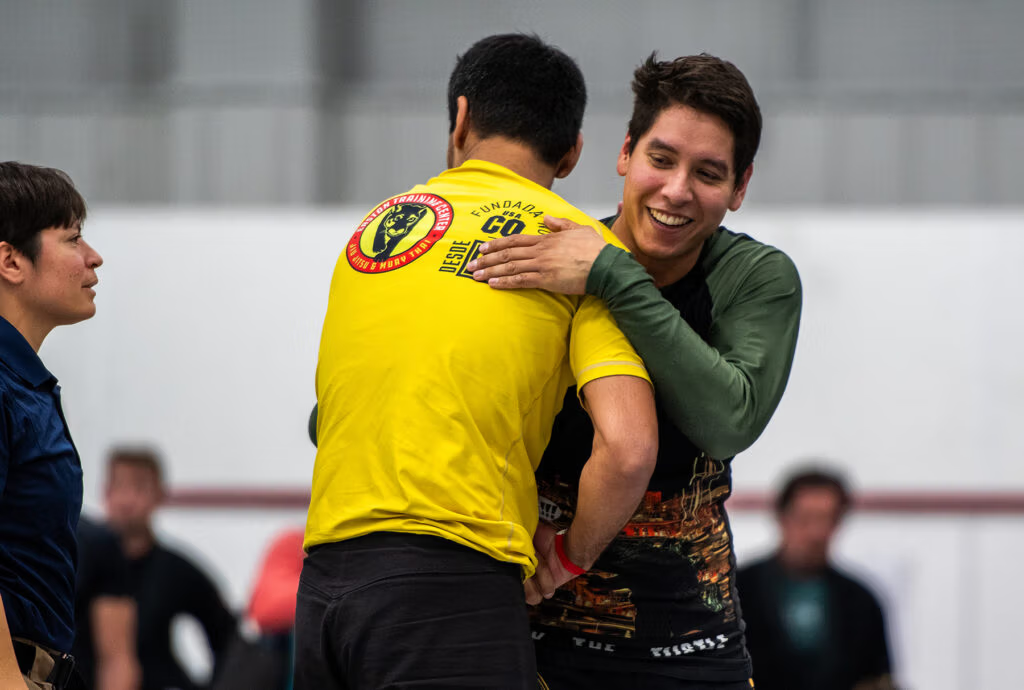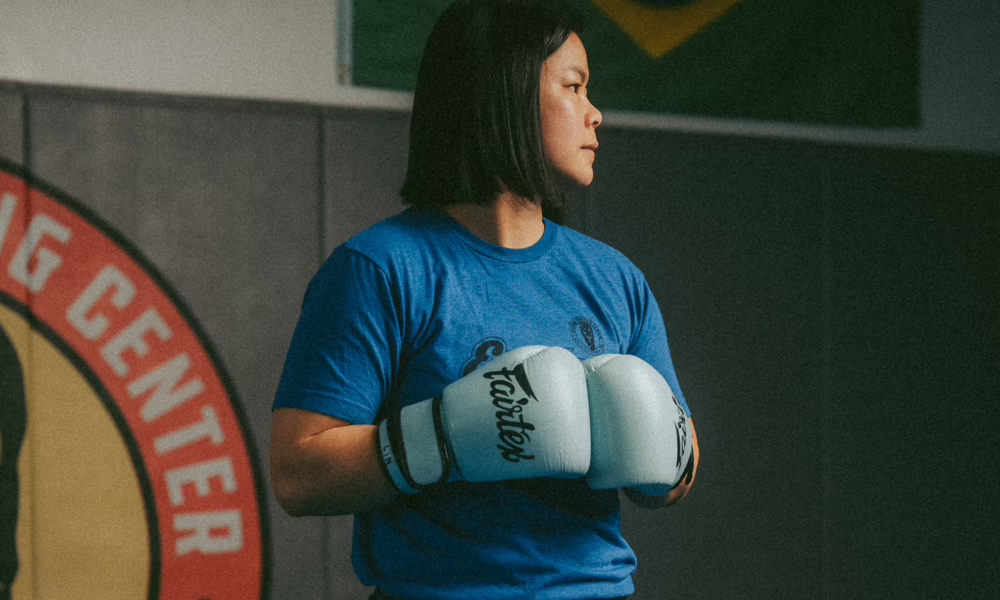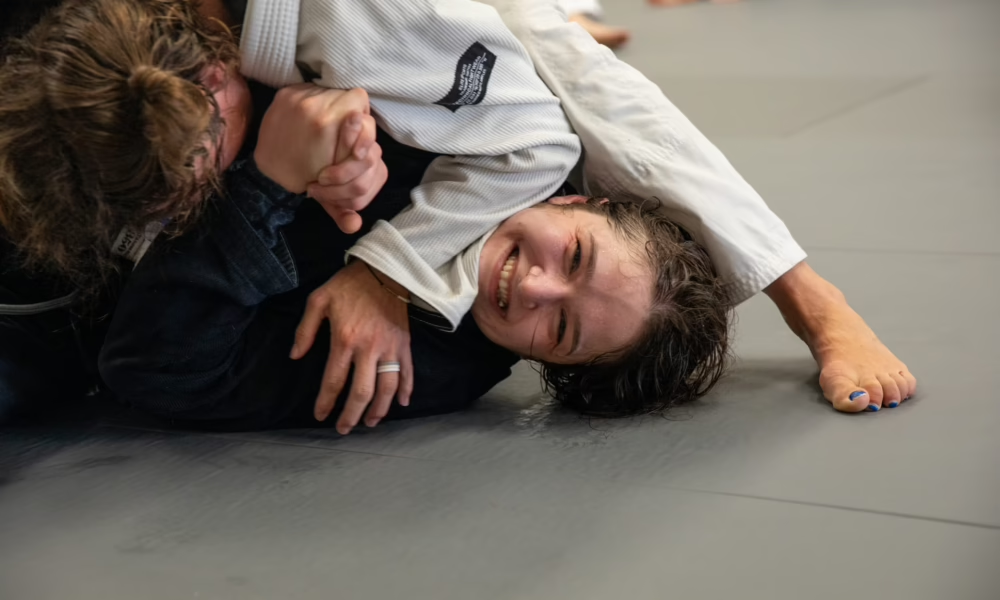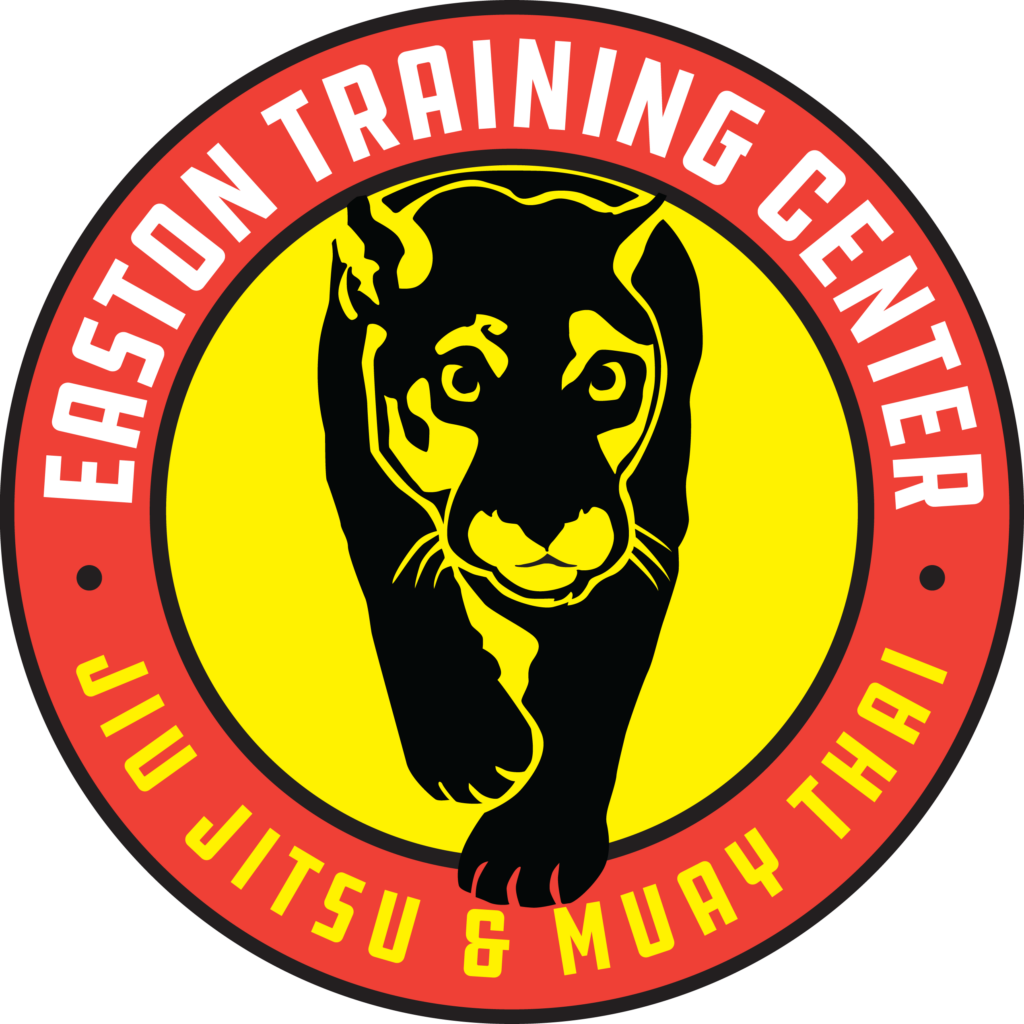One of my first Jiu Jitsu professors was live training with a white belt next to me. I heard him shout “tap.”
“TAP!”
I had never heard him shout so loud. All the eyes in the room focused on him. I found myself tempted to feel embarrassed for him, but the look on his face told me that whatever had happened did not warrant embarrassment.
What happened? He was letting the white belt work. The nervous student was trying to remember the technique, execute it, impress the professor, avoid counters. It felt serious.
The professor let the student get into the submission and the student, once there, WENT FOR IT. The professor, underestimating the intensity of the moment for the student, did not expect them to apply the submission with so much force and speed.
The shout tap delivers quick, clear communication. I’m sure after that moment, maybe after every shout tap, we evaluate how we got there in the first place and perhaps re-evaluate that moment. We move our boundaries around.
That day stands out as one of the clearest examples of personal boundaries tested and clearly communicated on the mats. I think about that moment often, as it helped me develop my own shout tap.
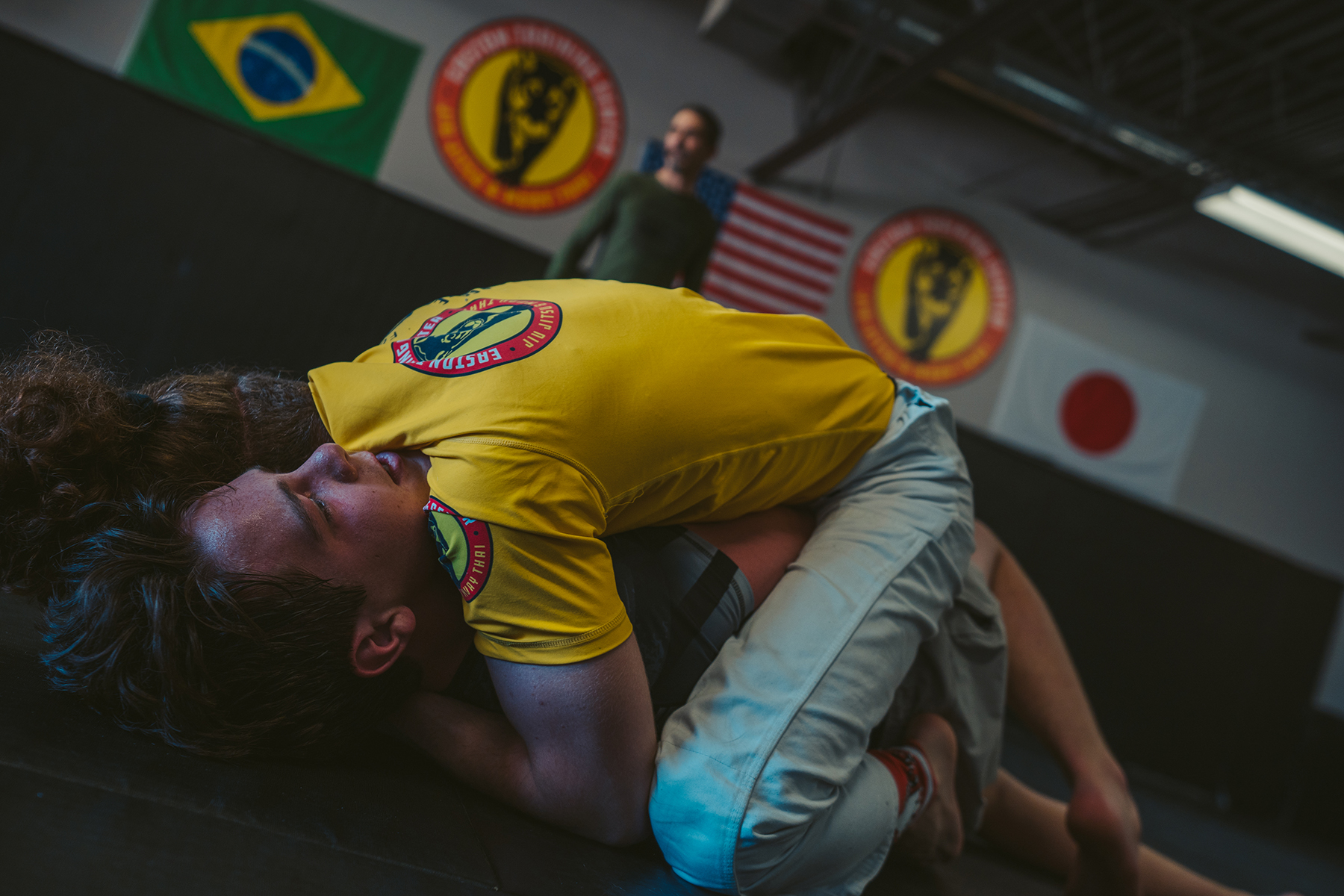
Testing our personal boundaries
Jiu Jitsu provides space for the nuances, complexities, and gray areas of boundaries to be learned, tested, and hopefully: respected.
Kids classes at Easton are incredibly fun and, for the coaches, an enormous puzzle. A wide variety of ages, sizes, interest, energy, and natural inclination to wrestle make every class an adventure.
One young girl, May, was coming to class but she had very little of that last component – the drive to rough house. While she enjoyed the warm-up and technique, some of the games and drills were scary for her.
Giant dodgeball is absolutely a class favorite: the coaches roll a yoga ball around the mat and if it touches you, you’re out. May did NOT feel safe and did not want to play. She also knew that she was expected to participate in the whole class.
May tried to see if she could get the coach to choose other games when she was there. It worked once, but the next time the game was on the schedule, she broke down in tears. She felt like refusing to play was doing the wrong thing. She felt like playing was betraying her body’s clear message to her that it was going to hurt her. She felt trapped.
When I saw her face, I came over and said, “You get to choose. If you do not want to play, stay here and if the ball rolls off the mat, help us out by rolling it back.”
She looked doubtful – like she wasn’t sure if that was still participating enough.
“YOU get to choose,” I said it again. “If you do not feel safe, you can choose to stay here. You can choose to play if you feel okay about it. If you choose to play, at any point you get to choose to stop if it no longer feels safe.”
She chose to stay on the side. The game began. She saw the kids running and laughing, she saw how careful the coaches were being. She ran in and got in on the fun. It was her choice and that moment was incredibly powerful for her. I saw her face look a little overwhelmed at one point and she let the ball brush her arm so she could be out. Another tactful solution.
Easton’s kids class provided the space for her to feel she could trust herself and her personal boundaries, and that grown-ups should too.
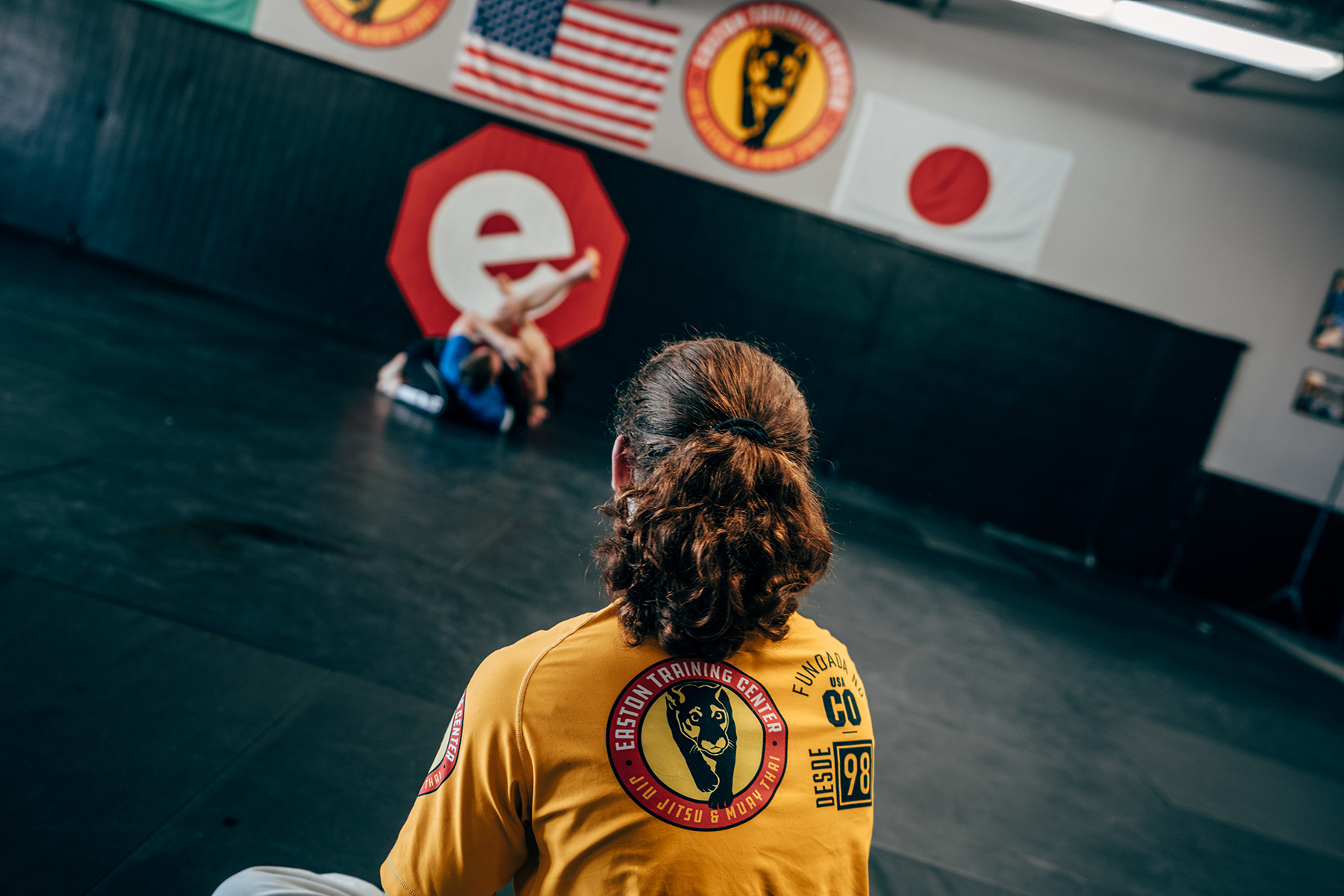
Boundaries can shift
It was Eric’s first day of class. He looked a little frozen. I guided him to line up on the wall with the other kids by taking his hand.
“I’m shy,” he said.
Warm-up started and he was still fairly frozen. We ran hand in hand for a bit and then he pulled away and raced on. He seemed confused and overwhelmed during the different warm-up movements. I came to join him, but he mostly sat out. I’d guide him back in from time to time for the running, which he liked. The coaches demonstrated the technique, and then it was time to drill. I sat with him and his partner.
He looked at me and clearly said, “I do not want to do this.” He set a firm boundary.
I said, “Ok,” and then proceeded to test that boundary… respectfully.
I had him watch and talk me through as I worked the technique with his partner. Then I asked if he wanted to squish me in side control and I worked the escape. He thought that part was fun, but he didn’t want to be squished yet.
We traded with his partner a few more times and then he was ready to be squished. As we worked with creating a safe space, he found that his boundary could move. His face brightened, his body loosened, and he even began testing the boundaries of the class by wiggling and giggling during attention stance. I gave him a look and then made an exaggerated return to attention stance and he followed. I gave him a smile and a nod.
When we build rapport and trust with each other, when the relationship is there, the Jiu Jitsu mat is a place where we can check our own boundaries. Sometimes they may be holding us back.
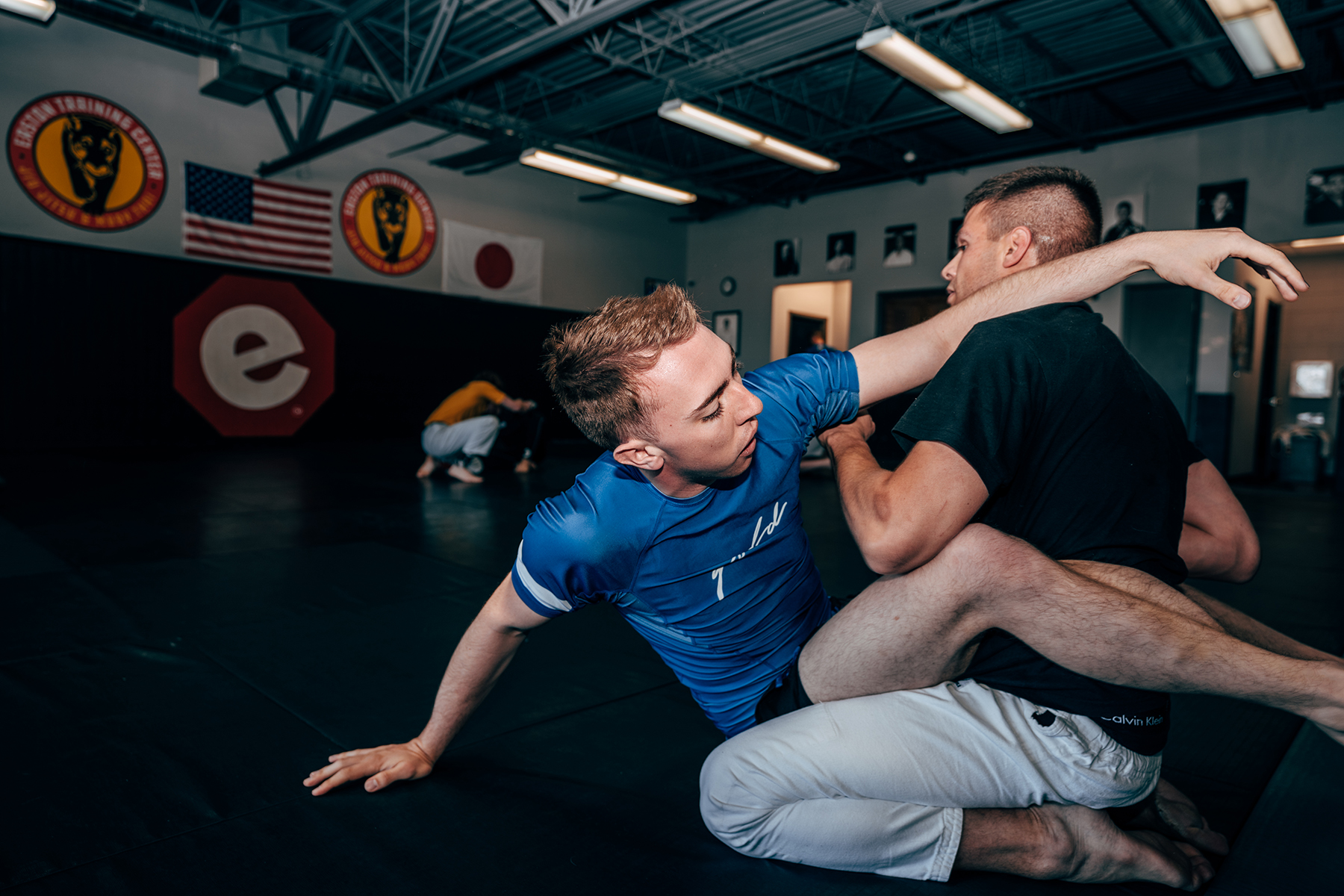
Learning to say “No.”
When we don’t feel safe, our brains enter fight or flight mode — not a productive space for learning. We may say “no” to a round with someone we don’t know or we know is not a good fit for our training goals that day. That “no” is not always vocal. It may be directing attention and body language away from that person as they are looking for a training partner. It may be an excuse. It may not be perfect, it may be a little awkward, but saying “no” to a round that doesn’t feel safe is a boundary we all should feel secure in.
Discomfort with saying “no” or “let’s adjust something” may come from a concern that our partner may take it personally. Their feelings may be hurt.
However, when we don’t protect our own boundaries for fear we may make another person feel uncomfortable, we communicate something else — that our feeling of safety isn’t worth as much as avoiding a potentially awkward moment with another person.
There are some tactful ways to say “no.” Avoiding eye contact, putting another person in between you and someone else when it’s time to choose partners, a subtle turn of the shoulder. As we become more confident that we can trust ourselves to hold our boundaries, it opens space to explore more graceful ways to navigate this part of training.
We may not want to admit our own discomfort. Buck up buttercup, we may say to ourselves. Get in there or you’re not tough enough for this sport.
Hopefully it doesn’t take too many injuries to find what’s worth it and what isn’t here. Some areas need bright, bold boundaries. Some areas are worth leaving to our intuition in the moment.
With trust comes flexibility. Any time something becomes more draining than energizing, more frustrating that fun, it’s a sign we may need to adjust our boundaries – both with ourselves and others.


